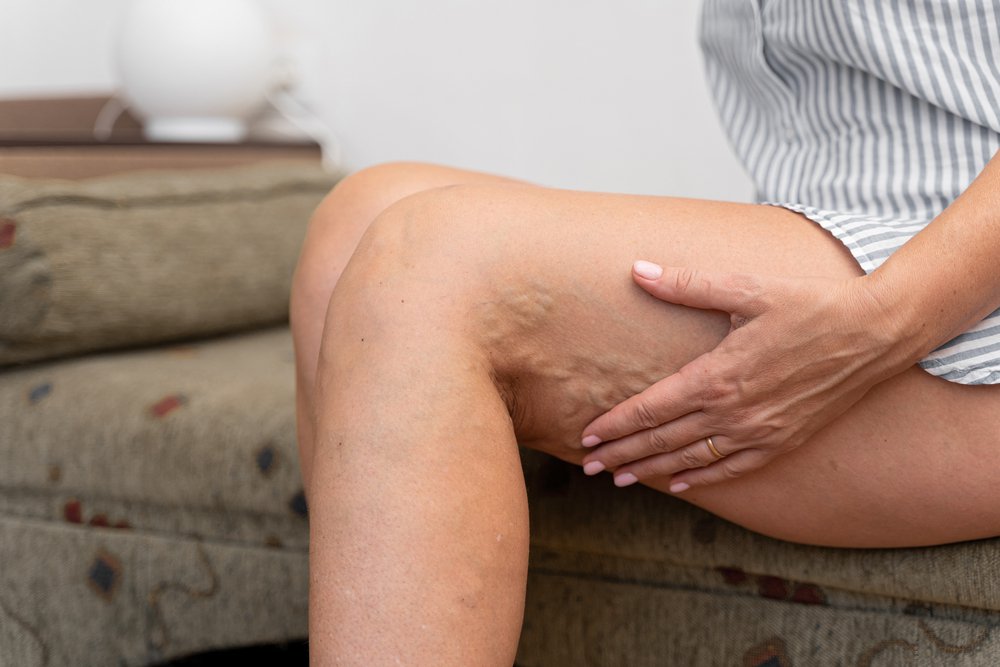 If you are struggling with varicose veins, you are not alone. Varicose veins are an all-too-common skin condition that can be uncomfortable, unsightly, and even painful. Age, gender, weight, or even pregnancy are all risk factors in developing varicose veins. Yet, there are steps that can be taken to help prevent varicose veins from forming. Here is how to help prevent varicose veins.
If you are struggling with varicose veins, you are not alone. Varicose veins are an all-too-common skin condition that can be uncomfortable, unsightly, and even painful. Age, gender, weight, or even pregnancy are all risk factors in developing varicose veins. Yet, there are steps that can be taken to help prevent varicose veins from forming. Here is how to help prevent varicose veins.
What Are Varicose Veins?
Varicose veins or spider veins are enlarged, gnarled veins that appear just beneath the surface of the skin. They can range in color from dark purple to light blue and may bulge out of the skin. Varicose veins are most commonly found in the legs and feet, but can occur anywhere in the body where veins exist. They are caused when tiny valves inside the veins become weakened or damaged, allowing blood to flow backward and pool inside the vein which causes it to swell. In some cases, varicose veins can lead to health complications like inflammation, skin ulcers, and blood clots. Treatment for varicose veins such as laser varicose vein treatment can vary depending on severity but generally includes lifestyle changes as well as some medical treatment options, but preventing varicose veins is an important step to take.
Exercise Regularly
Exercising regularly is an important part of preventing the onset of varicose veins. Physical activity helps to improve circulation and increase the flow of blood through your veins, which can help to prevent and reduce the appearance of varicose veins. Regular exercise also helps to promote weight loss and maintain a healthy body weight, both of which are important for reducing the risk of developing varicose veins.
For best results, it's recommended to engage in moderate-intensity exercise 3-4 times a week for at least 30 minutes each session. Additionally, exercises that involve the legs such as walking, jogging and cycling can be especially beneficial in helping reduce the risk of developing varicose veins.
Avoiding Tight-Fitting Clothing
Wearing tight-fitting clothes can increase the risk of developing varicose veins, as they restrict the flow of blood and put pressure on veins in the legs. It is important to avoid wearing any type of clothing that is too tight in order to reduce the risk of developing varicose veins. Additionally, wearing compression stockings may help to improve circulation and reduce swelling in the legs, which can help to prevent or alleviate the symptoms of varicose veins and promote healthier veins.
Compression stockings should be worn during physical activities such as walking or running, but should also be worn throughout the day when standing or sitting for long periods of time. Additionally, it is advised not to wear high heels if possible, as they can impede circulation and contribute to varicose vein formation. By taking these steps, you can reduce your chances of developing varicose veins and keep your legs healthy and strong.
Avoid Standing/Sitting For Long Periods
It is important to avoid standing or sitting for too long without taking a break as this can contribute to the development of varicose veins. Long periods of inactivity can reduce circulation and cause strain on the veins in your legs, leading to vein enlargement and an increased risk of developing varicose veins. To reduce the risk, it is recommended that you take breaks from sitting or standing at regular intervals throughout the day.
Additionally, it is beneficial to incorporate movement into your day by walking around or doing exercises such as leg lifts and calf raises while standing or seated. Staying active can help control swelling and diminish painful veins.
Wear Compression Stockings
Investing in compression socks or hose can help reduce your risk of developing varicose veins. Compression stockings provide gentle pressure which helps to improve circulation and reduce swelling in your legs. They are especially beneficial for those who stand or sit for long periods of time, such as nurses or office workers, as they can reduce strain on the veins and help to keep them healthy.
Furthermore, compression stockings may aid in reducing pain and discomfort associated with existing varicose veins. When selecting a pair of compression socks or hose, it is important to make sure that they fit properly and are comfortable to wear. There are various levels of compression available, and it is best to consult with a healthcare professional about which type would be most beneficial for you.
Maintain A Healthy Weight
Maintaining a healthy weight can help reduce your risk of developing varicose veins. Varicose veins typically occur when there is increased pressure in the veins caused by body weight, especially around the lower legs and ankles. Excess weight causes extra strain on these areas resulting in venous insufficiency, or poor blood flow which can cause enlarged blood vessels and varicose veins. To reduce this risk, it is important to maintain a healthy diet and exercise regularly. Regular exercise can help improve circulation throughout your body and allow for more efficient blood flow, reducing strain on your veins and preventing varicose vein formation.
Additionally, eating a balanced diet high in fiber-rich fruits and vegetables helps to maintain an ideal weight as well as promoting overall health. Taking these steps will help to keep your veins healthy while reducing your chance of developing varicose veins in the future.
If you are struggling with varicose veins or are interested in ways to further prevent varicose veins from occurring, visit our expert physicians at Sinai Laser Vein Center who are dedicated to providing top treatment for those with vein diseases. To schedule an appointment today, visit our website and schedule a free consultation!
